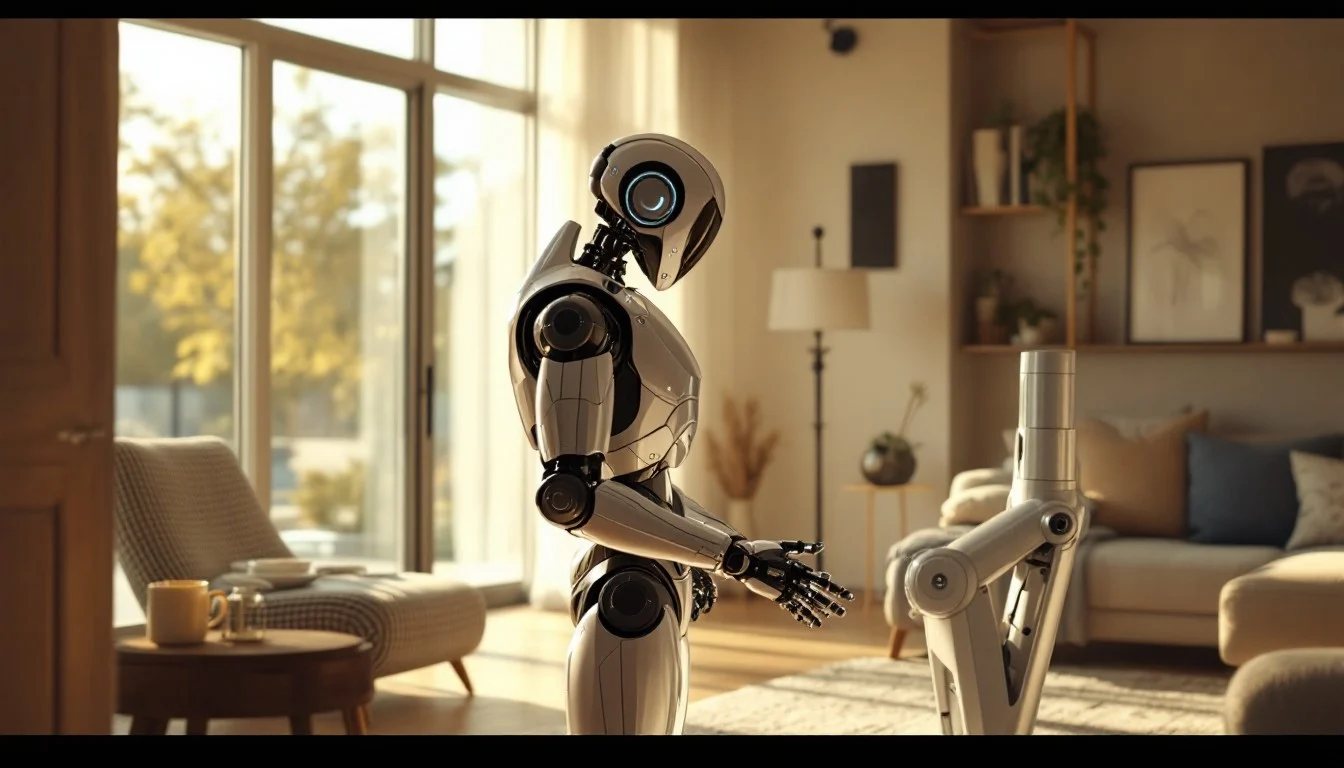Imagine waking to a freshly cleaned home, your morning coffee brewing before you even step out of bed, and your latest online order delivered right to your doorstep—all thanks to robotics. Far from being the stuff of distant science fiction, robots are quickly becoming trusted members of our households and essential partners in daily life.
From intuitive home assistants to the buzz of delivery drones overhead, robotics is revolutionizing the way we live, work, and connect. This technology isn’t just about convenience; it’s paving the way for safer, more efficient, and more enjoyable lives for people across the globe.
How Robots Are Already Part of Our Day-to-Day Lives
Robots might sound futuristic, but they’re working hard in many homes and communities right now. The adoption of robotics is surging, with innovations designed to fit seamlessly into our lives and meet real-world needs.
The Rise of Home Assistant Robots
Smart Chores, Happy Homes
Gone are the days when cleaning required heavy lifting and hours of effort. Robotic vacuum cleaners, like the famous Roomba and its competitors, autonomously keep floors spotless, learning the layouts of our homes and even responding to voice commands. Robots are folding laundry, mixing drinks, and, in some high-tech kitchens, even preparing entire meals.
Leading the charge are advanced home assistants such as Samsung’s Ballie and 1X’s NEO Gamma—robots that do so much more than just vacuum. These smart devices can control your appliances, provide reminders, entertain children, and watch over pets while you’re away. Many also act as companions, making homes more comfortable and secure, especially for the elderly and those with disabilities.
A Closer Look: Features and Functions
- Cleaning: Automatic vacuums, window washers, mops, and more.
- Security: Surveillance and monitoring for peace of mind.
- Health Support: Medication reminders, health tracking, and emergency alerts.
- Companionship: Offering social interaction for those living alone, mitigating loneliness with AI-powered conversations.
Today’s home robots aren’t just tools—they’re active participants in our well-being.
Delivery Drones: Redefining Convenience
Taking Logistics to the Skies
Would you believe that the latest package you ordered could one day arrive not in the hands of a delivery person, but from the sky? Delivery drones, sometimes called unmanned aerial vehicles (UAVs), are already being piloted by companies like Amazon, DHL, and grocery chains around the world. These flying robots efficiently navigate urban and rural landscapes to drop off parcels, food, and even medicines right at your door.
Delivery drones bring new meaning to “fast delivery.” Unlike ground vehicles, drones avoid traffic, take direct routes, and dramatically reduce delivery times. This is especially valuable for critical medical supplies, like vaccines, blood samples, or life-saving drugs, which drones now deliver in hard-to-reach areas or during emergencies when traditional transport is disrupted.
The Benefits of Delivery Drones
- Speed: Rapid delivery, often within minutes.
- Accessibility: Reaches remote, rural, or disaster-struck locations.
- Safety: Minimizes human contact—vital during pandemics.
- Efficiency: Reduces road congestion, lowers emissions, supports greener cities.
As technology and regulations evolve, the buzz of drones may soon be as common as the honk of delivery vans.
Robots at Work: Beyond the Home
While household robots and delivery drones grab headlines, the presence of robotics is growing in nearly every sector.
Healthcare Robots: Improving Care and Compassion
Hospitals and care centers now rely on robotic aids for surgery, patient monitoring, and even bedside assistance. Robots like the da Vinci Surgical System enable minimally invasive procedures that are safer, more precise, and come with faster recovery times. Therapy robots, such as the adorable PARO seal, offer comfort and companionship, helping ease anxiety and loneliness in patients of all ages.
Robots in Education and Entertainment
Children and students are building their own robots and learning coding through educational kits like LEGO Mindstorms. Educational robots inspire curiosity, creativity, and critical STEM skills vital for the jobs of tomorrow. In entertainment, robotic toys and animatronic figures delight with lifelike movements and AI-powered responses, blurring the lines between play and technology.
Industrial and Service Robotics: The Backbone of Modern Living
From manufacturing plants to retail stores, robots are essential for assembling products, managing logistics, stocking shelves, and even greeting customers. These machines work around the clock, boosting productivity and taking on tasks that are dangerous, repetitive, or simply undesirable for humans.
Advantages of Robotics in Everyday Life
Why are robots finding their way into so many aspects of daily life? The reasons extend far beyond novelty.
Enhanced Safety
Robots perform hazardous jobs—from exploring nuclear zones to cleaning windows on skyscrapers—so humans don’t have to risk their health or safety. In homes and public places, they monitor for fires, break-ins, and emergencies, sending instant alerts when needed.
Time and Energy Savings
Automating routine tasks frees up time for work, leisure, or family. Whether it’s vacuuming your living room, mowing the lawn, or delivering groceries, robots let us focus on what matters most.
Accessibility and Improved Quality of Life
Assistive robots make daily tasks easier for everyone, especially people with mobility, vision, or other challenges. They expand independence, helping users move around, remember medications, or communicate with loved ones.
Precision, Productivity, and Cost Savings
Robots don’t get bored, tired, or distracted. Their consistency minimizes errors and maximizes output in homes, hospitals, and workplaces alike. For businesses and consumers, this often translates into meaningful cost savings.
Social Interaction and Loneliness Relief
AI-powered robots are proving to be invaluable companions, especially for older adults and individuals who live alone. They keep users engaged, remind them to stay active, and provide a friendly face—or voice—every day.
Overcoming Challenges: The Road Ahead for Robotics
Despite their many benefits, integrating robots into everyday life isn’t without hurdles. The cost of sophisticated robots can be high, though prices are falling rapidly. Privacy and security concerns also remain at the forefront, particularly as home assistants collect and process more personal data.
Furthermore, the ethical, legal, and regulatory landscape is still catching up with the pace of innovation. Safeguards will be essential to ensuring robots work for the good of all.
Yet, the march of progress is unrelenting. As artificial intelligence and machine learning advance, robots will become even smarter, more affordable, and more adaptable. Their presence will continue to grow—enhancing not just convenience, but human flourishing.
Conclusion: Embracing the Robotic Revolution
From the gentle whir of home assistants tending to daily chores to the swift whizz of drones delivering emergency supplies, robotics in everyday life is more than a technological trend. It’s a profound transformation of our routines, expectations, and possibilities. These machines empower us, safeguard our loved ones, and connect us in ways that seemed impossible just a decade ago.
The future isn’t about robots replacing humans. It’s about collaboration: humans and robots working together to build cleaner, safer, healthier, and more connected lives.
Ready to Transform Your Routine?
Whether you’re looking to add a smart assistant to your home, curious about the next wave of delivery drones, or eager to discover how robotics can simplify your day, now is the perfect time to embrace the benefits. Take the first step—explore, experiment, and see firsthand how robotics can add convenience, safety, and a touch of magic to your everyday life.






